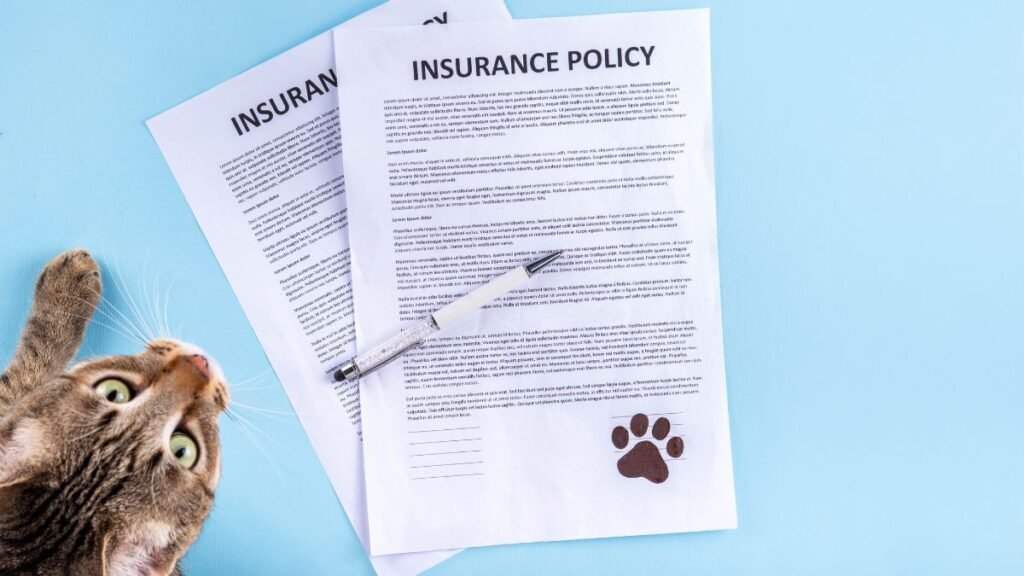Choosing the right pet insurance for cats in the United States can feel overwhelming. With dozens of providers, different coverage structures, and state-by-state cost variations, it’s no wonder many cat owners feel uncertain. Yet, the decision is too important to leave to chance. The right plan doesn’t just protect your cat—it protects your family’s financial stability. This guide explores the deeper aspects of cat insurance, showing you how to evaluate coverage, balance affordability with protection, and tailor policies to your cat’s unique needs.

Cat Insurance Plans
Why Cat Insurance Plans Matter in the U.S.
Veterinary care in the U.S. is among the most advanced in the world, but it comes with a steep price tag. A single emergency surgery can cost anywhere from $3,000 to $7,000, while cancer treatments may exceed $10,000. Without insurance, many families are forced into heartbreaking financial decisions. Pet insurance for cats acts as a safety net, ensuring your feline receives the best care possible without pushing you into debt or draining your savings.
Types of Cat Insurance Plans
Not all insurance plans are created equal. Understanding the main structures is essential before making a choice:
- Accident-Only Plans: The most affordable option, covering injuries like broken bones or swallowed objects. Illnesses are excluded.
- Accident and Illness Plans: The most common type, covering both injuries and illnesses, including chronic conditions.
- Comprehensive Plans: Includes accident, illness, hereditary conditions, and often wellness add-ons for preventive care.
- Wellness-Only Plans: Focused on routine care such as vaccinations, dental cleanings, and checkups. Usually offered as add-ons.
Key Features to Compare
When evaluating cat insurance plans, U.S. owners should look beyond monthly premiums and focus on these features:
- Annual Coverage Limits: Ranges from $2,000 to unlimited. Unlimited coverage is ideal in states with high veterinary costs like California and New York.
- Reimbursement Rates: Typically 70%, 80%, or 90%. Higher reimbursement reduces out-of-pocket costs but increases premiums.
- Deductibles: Adjustable from $100 to $1,000. Higher deductibles lower monthly costs but increase upfront expenses during claims.
- Exclusions: Pre-existing conditions, elective procedures, and breeding-related costs are usually excluded.
- Claim Processing: Some insurers process claims within days, while others take weeks. Speed matters in emergencies.
Regional Considerations Across the U.S.
Veterinary costs vary by state, which affects the value of different plans:
- California: High vet costs make unlimited coverage plans more cost-effective.
- New York: Specialty care is common, so comprehensive illness coverage is essential.
- Texas: Rural areas may benefit from limited benefit plans, while urban centers like Dallas require broader coverage.
- Florida: Preventive care add-ons are valuable due to climate-related risks like flea-borne illnesses and heartworm.
- Midwest States: Lower average vet costs mean mid-tier plans may provide sufficient protection.
Cat Insurance for Kittens vs. Adult Cats
The right plan depends heavily on your cat’s age:
- Kittens: Early enrollment avoids exclusions for congenital conditions and locks in lower premiums.
- Adult Cats: Accident and illness coverage is crucial as risks increase with age.
- Senior Cats: Premiums rise significantly, but coverage for chronic conditions like arthritis, diabetes, or cancer can still provide immense value.
Balancing Affordability and Coverage
Many owners search for cheap cat insurance, but the cheapest plans often exclude illnesses or hereditary conditions. Accident-only plans may cost $10–$15 per month but leave you exposed to thousands in illness-related costs. Comprehensive plans, costing $30–$60 per month, may seem expensive but can save thousands in the long run. The key is to balance affordability with meaningful protection. Sometimes paying a little more each month saves you from financial chaos later.
Cat Insurance for Multiple Cats
For households with more than one cat, the best insurance plans offer:
- Multi-pet discounts (5–10% off per additional cat).
- Customizable coverage for each cat’s unique needs.
- Consolidated billing for easier management.
For example, a family in Illinois with three cats may choose a single provider offering unlimited annual coverage and wellness add-ons, ensuring each cat is protected without juggling multiple policies.
How to Choose the Right Plan
Here’s a step-by-step process for U.S. cat owners:
- Assess your cat’s breed-specific risks and age.
- Compare state-specific costs and regulations.
- Decide between accident-only, accident and illness, or comprehensive coverage.
- Check for exclusions that may affect your cat (e.g., hereditary conditions).
- Look for multi-pet discounts if you own more than one cat.
- Evaluate claim processing times and customer service reviews.
Case Study: Choosing the Right Plan
A family in New York enrolls their 3-year-old Maine Coon in a plan with unlimited annual coverage, an 80% reimbursement rate, a $500 deductible, and a wellness add-on for dental cleanings and vaccinations. When their cat develops hip dysplasia, the surgery costs $6,500. With insurance, they pay only $1,700 out of pocket. Without insurance, the cost could have been financially devastating. This example shows how the right plan protects both pets and families, turning what could have been a financial crisis into a manageable expense.
Protecting Your Cat, Protecting Your Family
Pet insurance for cats in the U.S. is not one-size-fits-all. The best plan depends on your cat’s age, breed, health history, and your state’s veterinary cost landscape. While no policy covers literally everything, comprehensive plans with unlimited coverage, wellness add-ons, and hereditary condition protection come close. By understanding regional differences, policy structures, and key features, U.S. cat owners can make informed decisions that ensure their cats receive the best care possible without financial strain.
At the end of the day, the right insurance plan is about peace of mind—knowing that wherever you live, and no matter what life brings, your cat can access the care they deserve. And that peace of mind, really, is priceless.
Want to learn more? Explore our Cat Insurance FAQ for answers to common questions and guidance on choosing the right plan for your feline companion.